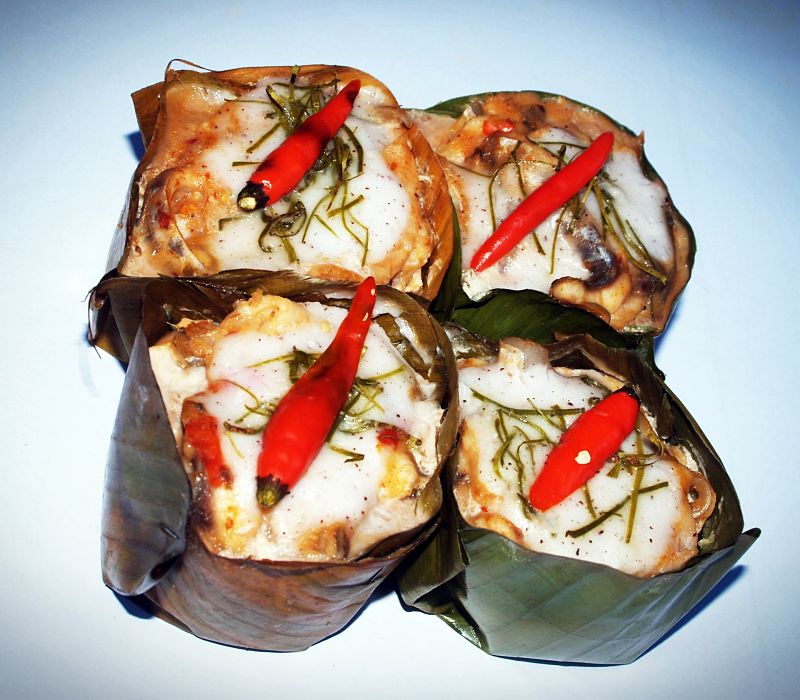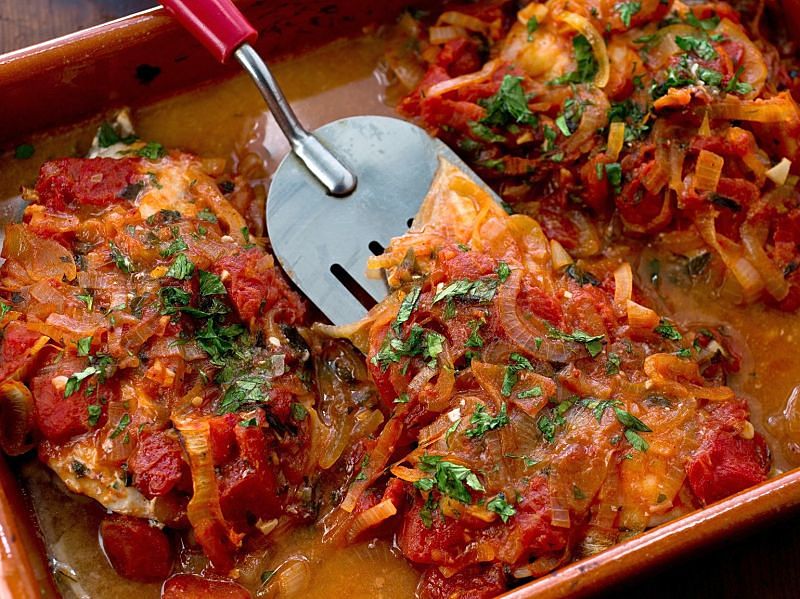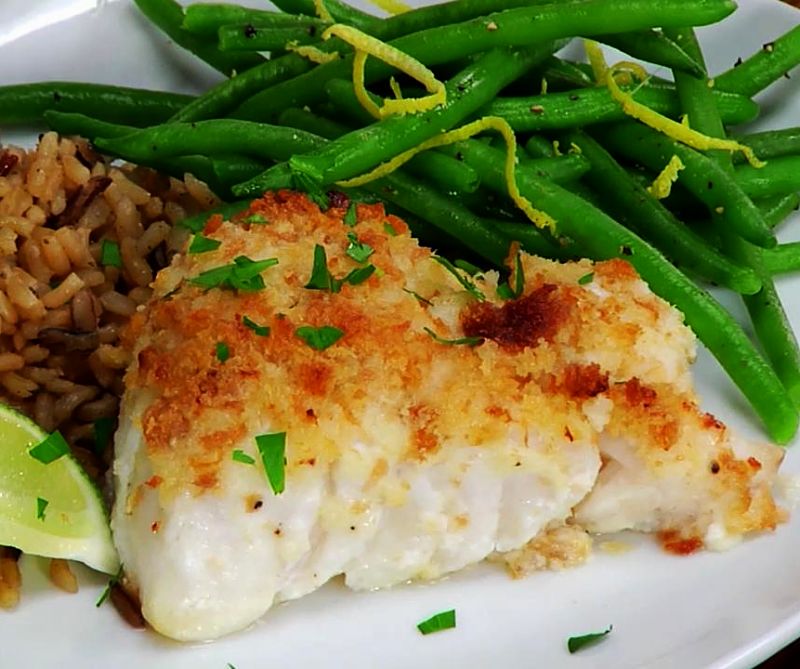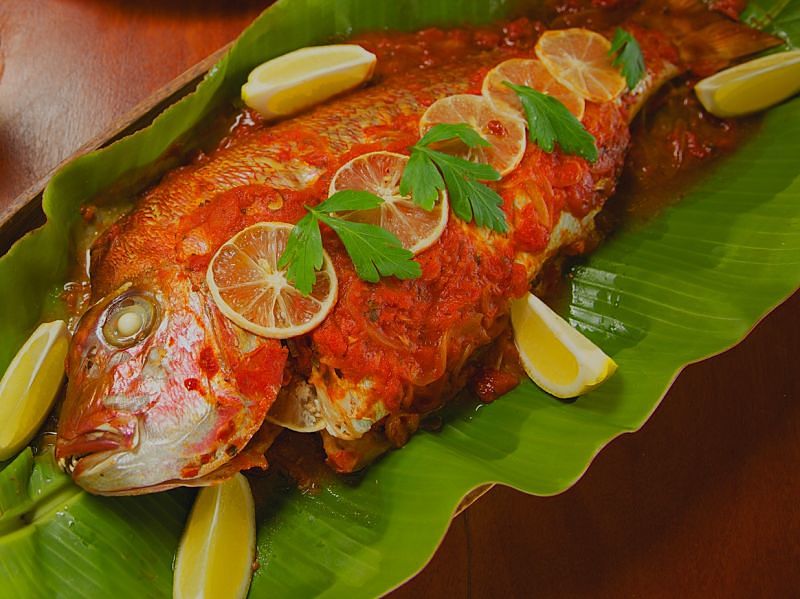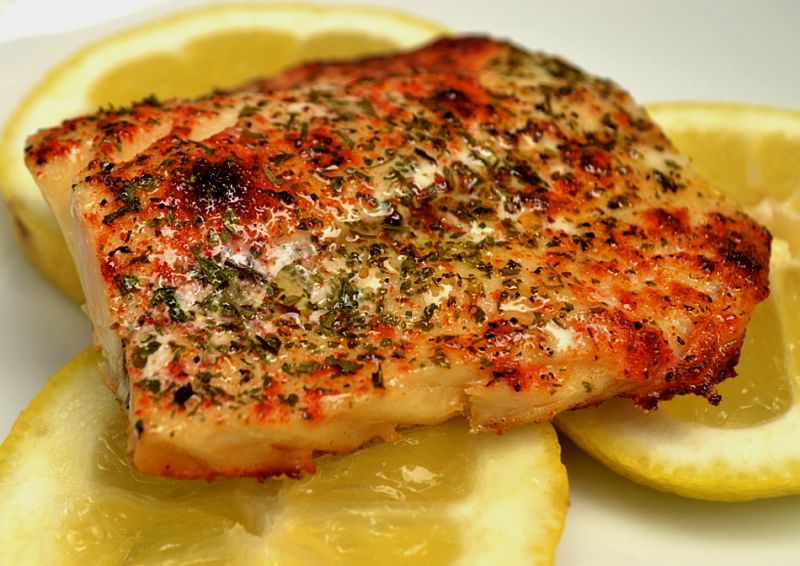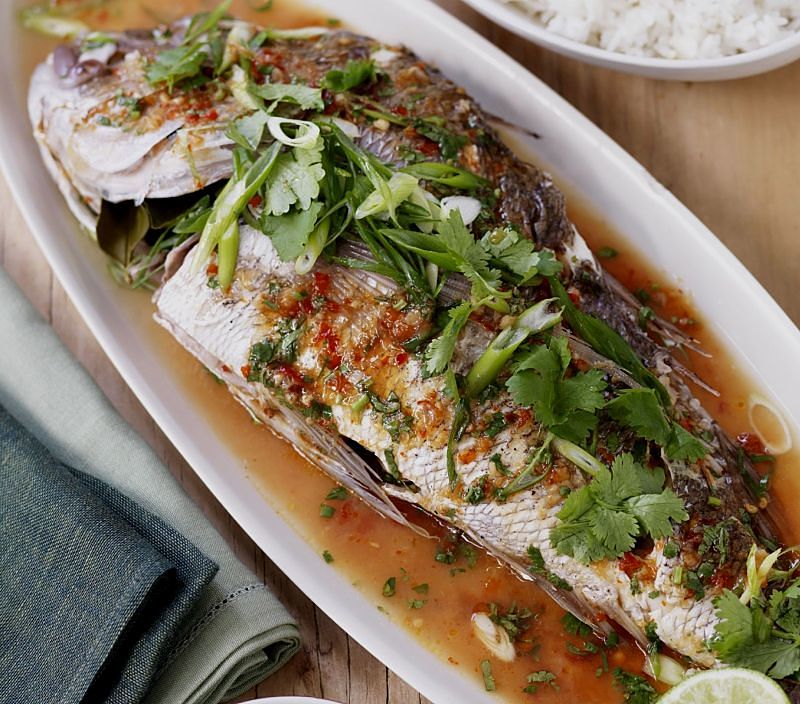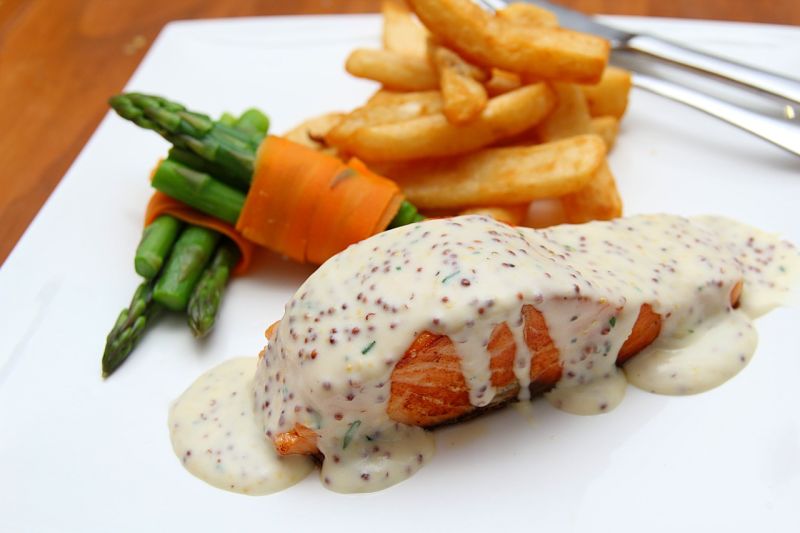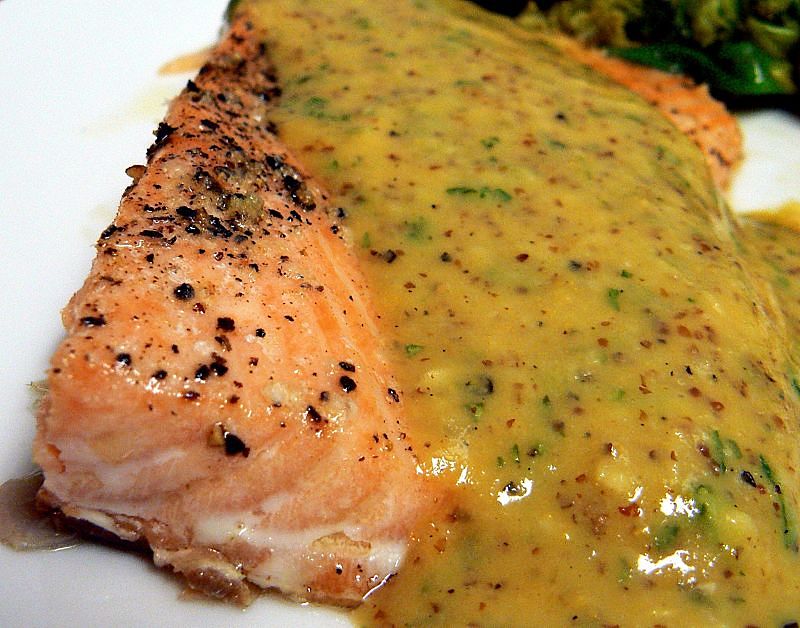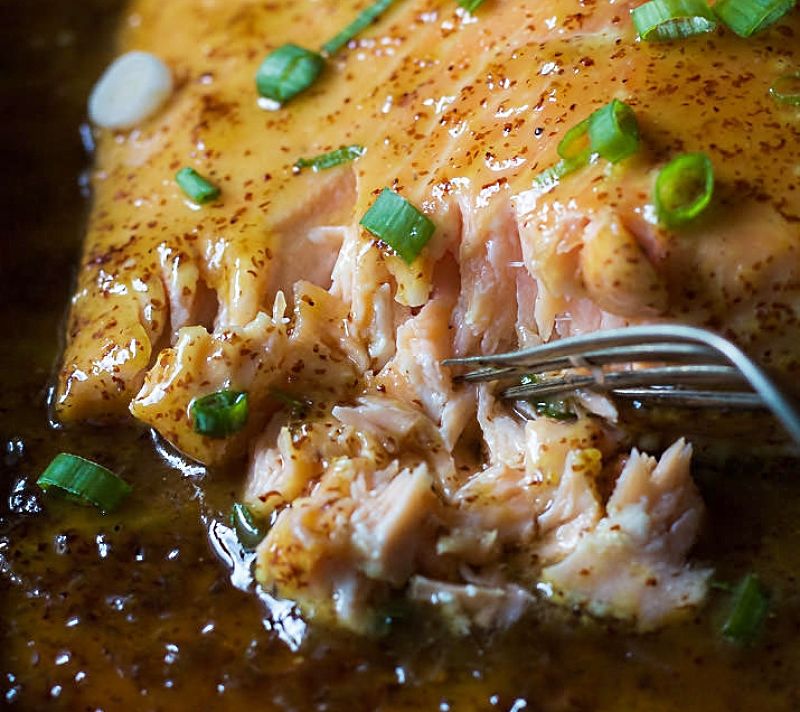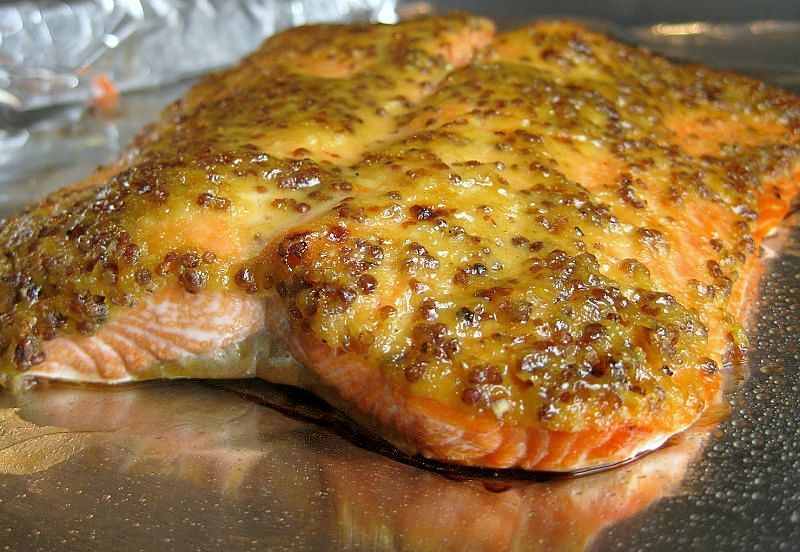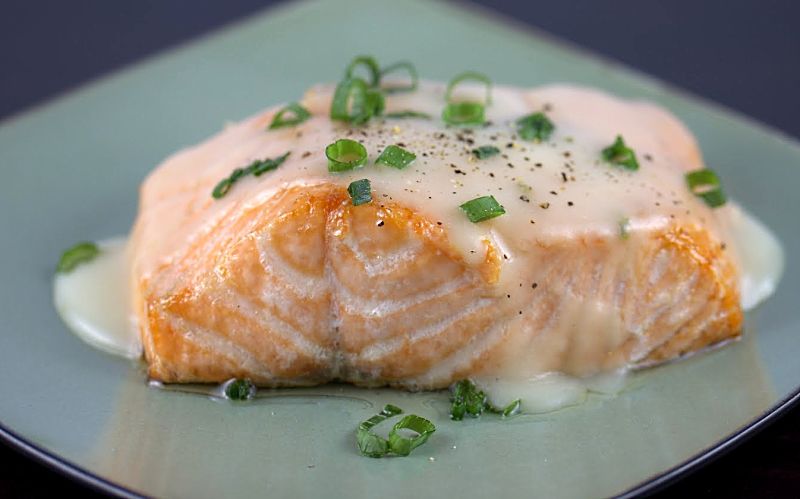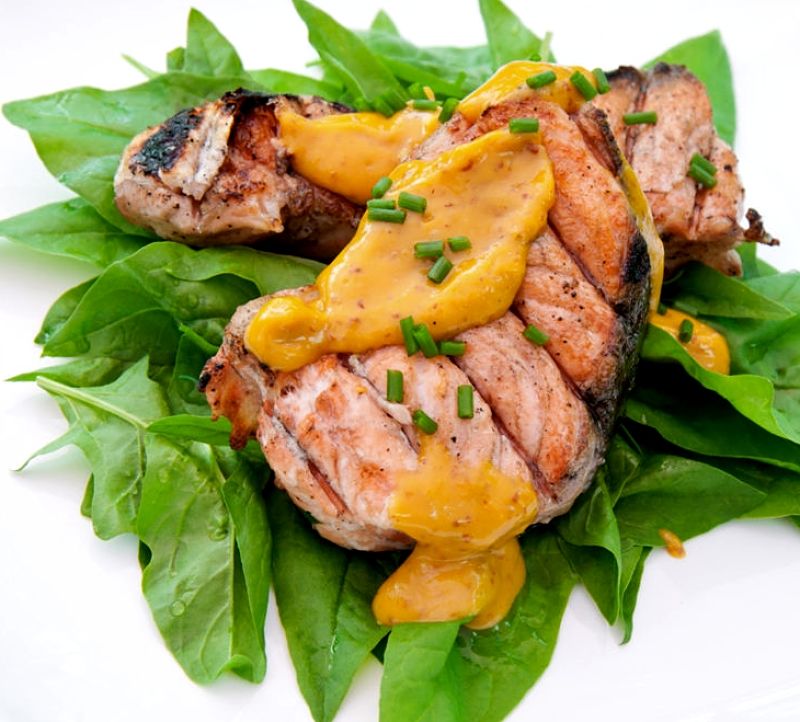How to Bake Fish - Easy Baked Fish Recipes and Tips
Baking is probably the simplest and best to cook fish because the fish retains its moisture and delicate flavors. The trick is to not overcook the fish, and to swamp the fish with sauces, herbs or spices. There are a variety of ways of cooking fish in the oven enclosed in parchment or foil, over vegetables in a covered dish or uncovered in a flat baking dish.
Baked fish is a healthy alternative to frying or grilling. A fresh whole fish delicately blended with fresh herbs, ginger and garlic and baked on a bed of fresh vegetables makes a lovely healthy meal for a family or a dinner occasion. Baking fish is quick and easy to do and usually only requires a single dish so that there is only minimum cleaning required.
Choosing the Fish
The fish must be very fresh and whole fish is preferred, but you can also bake fillets. The main thing to avoid is overcooking the fish which will dry it out and destroy the delicate flavour of the fish. Always check the recipes for the correct cooking times, but the ideal time will vary, mostly dependent on the thickness of the fish. As a general rule allow about 10 minutes baking time for every inch (2.5 cm) of fish thickness, measured at the thickest part of the fish. Thin fillets generally take just 15 minutes, whereas fish cutlets make take 15 minutes and very large whole fish make take 20-30 minutes. Oily fish such as tuna, mackerel or salmon are probably best grilled or baked on a grill in a baking pan so that the oil can drain during the cooking.
Baking White Fish
Lean, delicate, white fish such as haddock, bream, whiting, cod, plaice, or other local fish species, that is not oily like tuna, salmon or herring is idea for baking with minimal herbs, spices or other flavours that could ruin the delicate fish flavour. In some ways the cooking is similar to steaming, especially if the fish is wrapped in foil. The delicate flesh of lean white fish needs to be protected so that it does not become dry during the cooking and over cooking is avoided.
To help prevent the delicate white fish from drying out, add some liquid to the baking tray or casserole dish, or add a prepared sauce during the cooking. You can use water, milk, lemon, light coconut milk, lime, wine, butter, or orange juice, oil or a little chicken, vegetable or seafood stock. Various other ingredients and flavours can be added to the dish such as herbs, onions, tomatoes, garlic, ginger or a variety of chopped vegetables.
Baking Fish in Foil
Many people like to bake fish by first wrapping it in foil, which is very efficient, retains the moisture of the fish and helps to infuse the fish with the herbs, ginger and other ingredients added to the foil. Wrapping the fish in foil, creates an effect similar to steaming, as moisture is retained within the foil.
Preheat the oven to about 400 degrees F (200 degrees C) and grease a large piece of foil with butter. Take a piece of fish and rub the outside with pepper and salt. Then place the fish onto a piece of foil large enough to completely wrap and seal the piece of fish inside. Add some herbs, spring onions, garlic and lemon juice, and fold up the sides of the foil and fold over at the top to seal. Place he wrapped fish into the oven on a shallow baling tray or directly onto the shelves and cook for the specified time until the flesh is white and firm, but only just cooked.
If baking a whole fish wrapped in foil, make sure the fish is thoroughly scaled, cleaned inside and out before wrapping it in foil. The tail, head and skin can be left attached to the fish. Check that the body cavity is clean and it can stuffed with garlic, ginger, lemon and herbs or with a breadcrumb stuffing mixture. The time taken to cook a whole fish wrapped in foil can be twice as long as a fillet of fish, perhaps around 30 - 45 minutes. Allow 15 minutes for every pound or half kilo of fish plus an extra 15 minutes. Once the fish is cooked, take it from the oven, remove the foil and perhaps remove the skin before serving. For less formal occasions the fish can be unwrapped at the table.
Baking Fish in the Oven without Foil
Oily fish such salmon or trout, or lean white fish can be simply baked on a baking tray or in a shallow baling dish without wrapping in foil. This browns the outside of the fish which is steeped in herbs and spices, while the interior is moist and white. Even lean types of fish can be baked in this way by coating the outside with olive oil or another type of vegetable oil. Generally, many whole fish are baked without foil as the skin tends to act to seal the fish and retain moisture. This method is more suited to large somewhat oily fish.
Baking Large Whole Fish
For a large thick fish such as a sea bass or grey mullet or other similarly shaped fish with a round profile, make several diagonal cuts into the fish on both sides. This helps to cook the fish more evenly and you can add herbs and spices to the cuts to help the flavour penetrate the fish flesh. Season the outside of the fish with salt and pepper, and the internal body cavity. Make sure the fish is throughout cleaned and all the scales have been removed. Sprinkle with lemon juice, brush with melted butter and add so some herbs to the outside, the cavity and the slits along the body.
The body cavity of the fish can be stuffed with herbs, garlic cloves, ginger pieces, lemon slices or you can use a specially prepared stuffing made from breadcrumbs. Close the cavity by securing it skewers or cocktail sticks and restore the fish to its original shape.
Place the fish on a paper lined or greased baking tray and bake in the oven until the skin and outside of the fish is brown and crisp, and the internal flesh is white and firm. Baste during the baking with the cooking juices and a little melted butter and turn once to brown both sides of the fish.
Baking a Whole Flat-Fish
Baking a whole flat-fish is similar to other whole fish, although adding stuffing can be a delicate operation and the fish will be cooked in a much shorter time.
As there is only a tiny body cavity, you will need to make slits for the stuffing or to insert herbs and spices into the fish. Take a sharp knife and slice into the flesh right down to the backbone. Fill the cavity with a little stuffing or herbs in a loose fashion as above, dot with butter and bake in the oven until done.
Stuffing for Baked Fish
A typical stuffing can be made by combining about 2 oz of fresh breadcrumbs, pepper and salt, chopped bacon, some milk, chopped herbs such as coriander or parsley and a little beaten egg. Mix these ingredients together to form a paste that is used to stuff the fish.
Cooked stuffing can also be used by melting a little butter and lightly frying chopped onions and celery, add chopped herbs and then breadcrumbs, salt and pepper and mixed well.
Baking Fish in Parchment
Prepare one serving packet per person. Place one serving of seasoned fish on one side of a sheet of parchment paper. Add seasonings, salt and pepper, herbs shallots, thinly sliced vegetables and mushrooms.
Fold parchment over the fish, crimp the edges to seal the packets. Put packets on baking sheets for easier handling. Bake until fish is opaque and flaky - don't overcook. Generally it will require about 15 minutes with extra time for thick pieces of fish or whole fish.
If you've sealed the parchment paper it will brown slightly and puff up a bit in the oven.
Baking Fish in a Closed Dish
There are many fish casserole recipes when the fish and a variety of other seafood is cooked in a covered dish with a variety of vegetables. Timing is critical and you may need to precook vegetables such as potatoes an carrots to prevent overcooking the fish
Baked Fish on a Bed of Vegetables
Baked fish with vegetables is a healthy dish where the flavour of the vegetables is gently infused into the fish. Firstly marinate the fish with fresh dill greens, crushed garlic and coriander leaves, lime juice, chilli powder, salt and olive oil ( or some other herb and spice combination). Season the inside and outside of the fish with this mixture. Line the base of baking tray with onions, garlic, chopped bell peppers, potatoes and carrots (precooked) and sprinkle it with lime juice.
Place the fish on top of the bed of vegetables and sprinkle the fish with a little olive oil to help keep it moist. You can add various herbs and spices. Bake uncovered in the oven, or cover lightly with a piece of foil.
Baked Fish Recipe - Asian-style
Ingredients
- 2 whole fish
- 1/3 cup of light soy sauce
- 1 tablespoon of white wine vinegar
- 2 tablespoons of vegetable or sunflower oil
- 1 red chilli, seeds removed, cut into thin strips
- 2 cm piece ginger, peeled, cut into wafer- thin strips
- 2 shallots (spring onions), sliced diagonally, for garnishing
Method
Preheat your oven to 220 degrees C (420 degrees F). Clean the fish, rinse and remove the scales. Slash each side twice where the fish is thickest. Spray or rub a roasting pan with oil and add fish to the pan. Brush the fish with remaining oil, season with salt and freshly ground black pepper. Sprinkle sesame seeds over the fish. Bake for about 25 minutes or until the fish are cooked through to the center. While the fish is baking, place 2 tablespoons of water in a saucepan and add the chilli, soy, ginger and vinegar. Simmer over low heat until the ginger and chilli have started to soften and become aromatic. Place the baked fish on a large serving platter (presentation is very important). Pour the Asian-style dressing over over the fish and serve garnished with shallots, chopped red chill and other fresh herbs.
Baked Fish with Mixed Vegetables
Ingredients
- 1/2 cup water
- 1 cup olive oil
- 4 garlic cloves
- 16 sprigs parsley
- 1 tomato, sliced
- Juice of 1 lemon
- 2 potatoes, sliced
- 1/2 teaspoon sea salt
- 1 cup crushed tomatoes
- 2 small onions, sliced
- 1 teaspoon ground cumin
- 1 teaspoon paprika powder
- 1/2 green bell pepper, sliced
- 1 teaspoon freshly ground pepper
- 1 lb (5OO g) of firm-fleshed fish cut into 2-inch (5 cm) chunks
Method
Preheat your oven to 400 degrees F (200 degrees C). Place the salt, pepper, cumin, paprika, garlic, parsley, lemon juice and olive oil into the bowl of a food processor. Pulse the mixture to create a smooth marinade. Rub about one quarter of the marinade over all sides of the fish pieces. Set aside in the refrigerator for 30-60 minutes. Pour the rest of the marinade into a saucepan with the potatoes and 1/2 cup of water. Cover the pan and cook the potatoes over moderate heat for 15-20 minutes. Next, place a layer of the cooked potatoes over the base of large baking dish. Place the marinated fish pieces on top in the center of the dish. Arrange the tomato, onion and green bell pepper slices in a circle around the outside of the fish. Pour the sauce over the vegetables and fish and bake for about 30 minutes, or until the vegetables are just starting the get soft and the fish is cooked through. Serve immediately with rice and steamed vegetables.
Baked Fish Fillets Recipe with Fresh Ginger and Spring Onions
Ingredients
- fresh herbs for serving
- 2 teaspoons sesame oil
- 3 tablespoons of dry sherry
- 2 spring onions, thinly sliced
- 1 tablespoons low-salt soy sauce
- 1 tablespoon of fresh ginger, finely chopped
- 4 bream, snapper or other firm white fish fillets, skinned (about 200 g; 7 oz each fillet)
Method
Preheat your oven to 190 degrees C (375 degrees F). Combine the soy sauce, ginger, sherry and sesame oil in a small bowl and set aside. Grease and cover a 23 x 33 cm (9 x 10 inch) metal baking dish with foil. Allow and overhang of 5 cm (2 inches) on both of the shorter ends of the dish. Spray the foil thoroughly with cooking spray. Place the fish fillets in the center of the foil in a single layer. Spoon the soy and ginger mixture over the fish. Then, carefully fold the foil over the top of the pan and seal, loosely, but so it forms a mini oven. Bake the fish for 10-12 minutes, or until the fish is just cooked through. Carefully transfer the fish fillets onto individual serving plates. Spoon the hot juices from the pan over the fillets. Serve sprinkled with sliced spring onions, slices of red chilli and fresh herbs.
Greek-Style Baked Fish Recipe
Ingredients
- 1/2 cup olive oil
- 1 cup of celery, diced
- 1/2 cup dry white wine
- 2 lemons thinly sliced
- 2 teaspoons dried oregano
- 2 large onions thinly sliced
- 1/4 cup breadcrumbs, (or Panko)
- 1 cup of fresh parsley, chopped
- 5 ripe tomatoes, seeded and diced
- 3 cloves of garlic, finely chopped
- salt and freshly ground black pepper
- 3 tablespoons freshly squeezed lemon juice
- 3 lb (1 1/2 lb) firm white-fleshed fish fillets such as cod or halibut
Method
Preheat your oven to 180 degrees C (350 degrees F). Using high heat, sauté the onions in the oil. Add the celery and fry for about 5 minutes until just starting to get tender. Add the garlic and fry for another minute. Add the parsley and diced tomatoes to the pan and sauté for several minutes. Remove from the pan from the heat and set aside. Next, place the fish fillets in a metal or ceramic baking dish. Season with salt, freshly ground black pepper and sprinkle with oregano. Pour the onion and tomato mixture over the fish and place 2-3 thin slices of lemon on top. Next, pour the wine and lemon juice over the fish. Sprinkling breadcrumbs over the fish. Bake the fillets uncovered for 40-45 minutes, or until the fish is just cooked.
Fish Baked on Vegetables Recipe
Ingredients
- 1/4 cup olive oil
- 1 tablespoon Dijon mustard
- 3 tomatoes, cut into wedges
- 1/4 cup pitted black olives
- 1 tablespoon of lemon juice
- 2 zucchinis, cut into wedges
- 2 red onions, cut into wedges
- 1 small garlic clove, crushed
- 1/2 cup roughly chopped flat-leaf parsley
- 4 x 180 g (6 oz) thick and skinless white fish fillets
Method
Preheat the oven to 200 degrees C (400 degrees F) Lightly fry the onions, zucchini, tomato and olives in oil and spread over the base of a greased baking dish. Brush fish with a little oil and position on top of the vegetables. Bake for 25-30 minutes until the fish is just cooked through. Make a dressing by whisking together the lemon juice, garlic, mustard and remaining oil. Distribute then cooked fish and vegetables on serving plates and pour over the dressing. Serve hot with a sprinkle of chopped spring onions and fresh herbs.
